Mystery of Shropshire Iron Age coin hoard detectorists
- Published
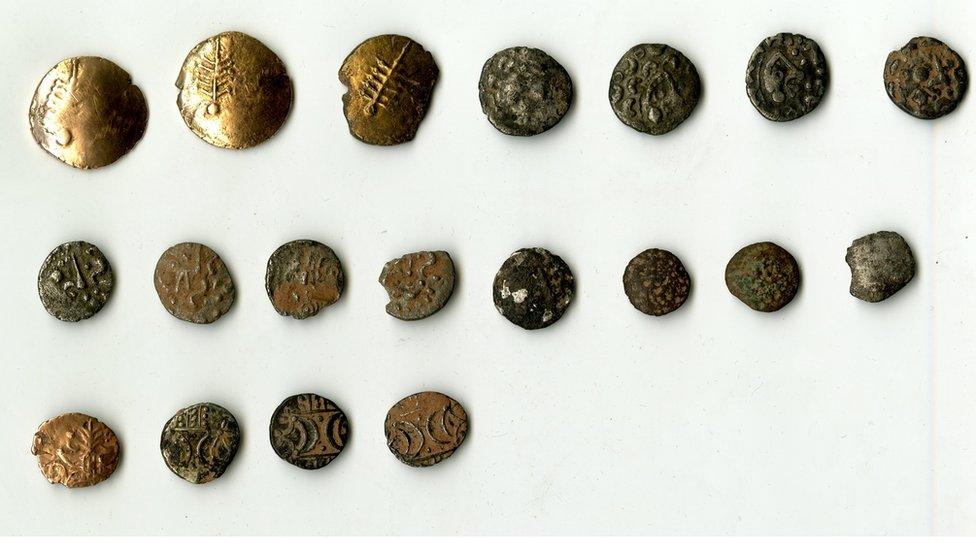
The coins were found in the Teme Valley in 2017, and reported by the landowner the following March
Mystery surrounds the identity of two men who found a hoard of gold and silver Iron Age coins in Shropshire.
The find was reported by a landowner in the Teme Valley, who said he was given 19 coins by two metal dectorists he had allowed to search his land.
Fifteen have been declared treasure. Four were not because of uncertainty about their origins.
An inquest heard the men - known as Andrew and Charlie - have not been traced and may have kept more coins.

Peter Reavill said the Shrewsbury Museums are keen to acquire the coins for its collection
The hearing at Shrewsbury's Shirehall was told the pair, who were possibly from Kent, visited the land numerous times in 2017.
It was told they had left a mobile number, but have been unreachable, and police found the number was unregistered.
Peter Reavill, Shropshire's finds liaison officer, said it was possible they had split finds between themselves and the landowner, meaning there may be more unreported coins.

You might also be interested in

The four gold and 15 silver coins dated from 50 BC to AD 45. While the 15 coins declared treasure are from a tribe native to the West Midlands, one gold and three silver coins are from another tribe which resided in East Anglia, he said.
A report, external by the British Museum said they could have been "acquired elsewhere" and were not found to be treasure as it was "unlikely" they were from the same find.

What is treasure?
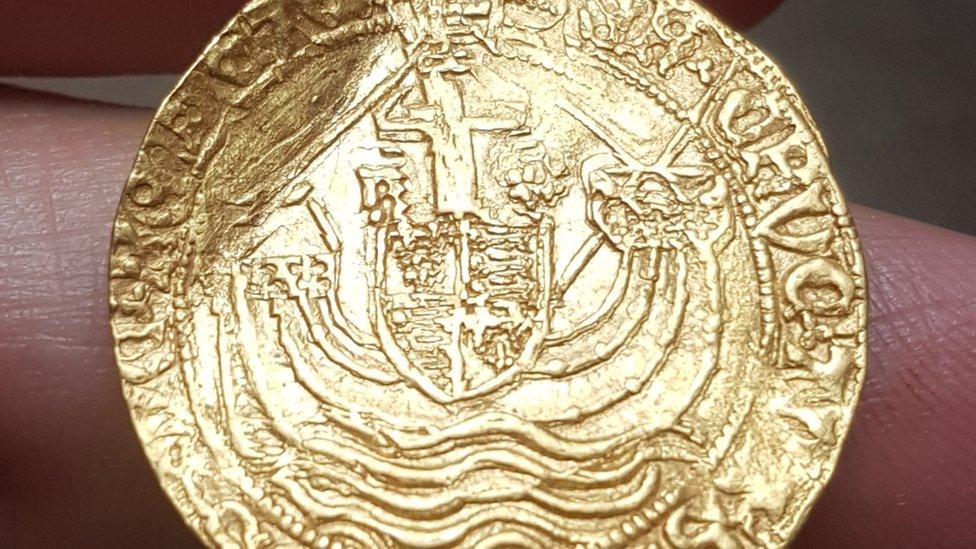
Treasure is any object which is at least 300 years old when found and:
is one of at least two coins in the same find and has a precious metal content of at least 10%
if the precious metal content is less than 10%, is one of at least ten coins in the same find
is not a coin but has a precious metal content of at least 10%
is any object of any material found in the same place as another object which is deemed treasure
is an object substantially made from gold or silver but is less than 300 years old

Under the Treasure Act 1996, external, finders of potential treasure are obliged to notify the coroner - and can face an unlimited fine or up to three months in prison, external if they do not.
"These two detectorists may not have had information about the law," Mr Reavill said.
"But if they did... they should have known they needed to report they had found an item of possible treasure."
He added the 15 coins alone represented the largest Iron Age discovery in Shropshire, making it a "rare and exciting" find.
West Mercia Police has been contacted for comment.

Follow BBC West Midlands on Facebook, external, on Twitter, external, and sign up for local news updates direct to your phone., external
- Published20 April 2019
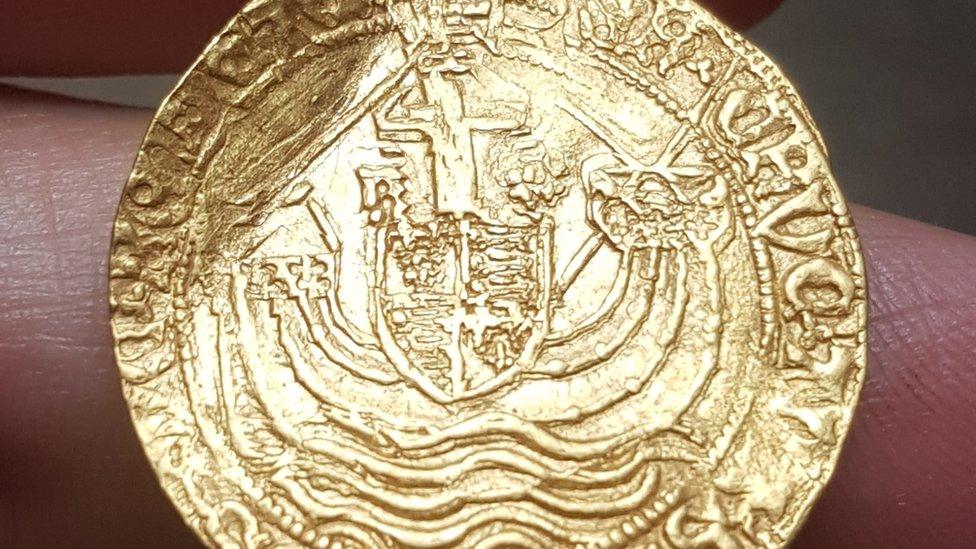
- Published16 April 2019
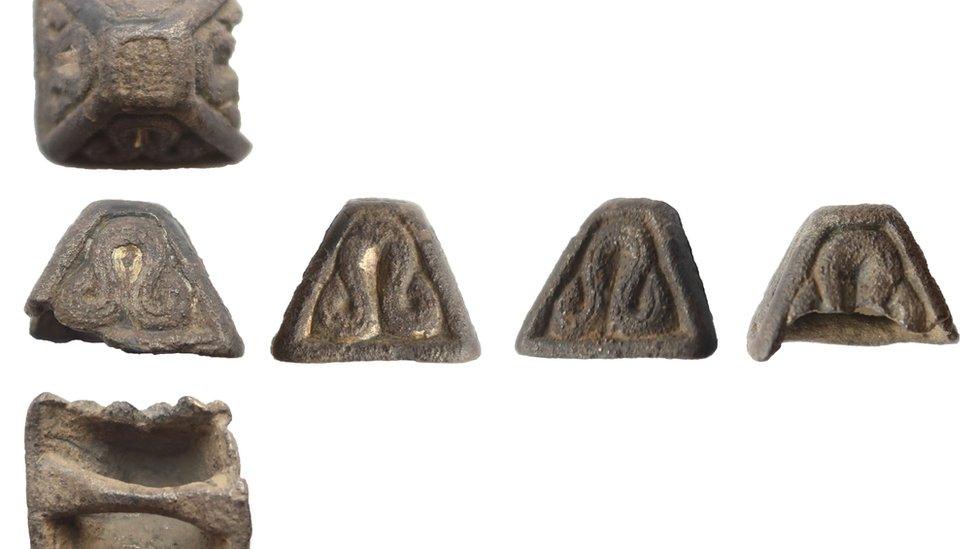
- Published16 March 2019
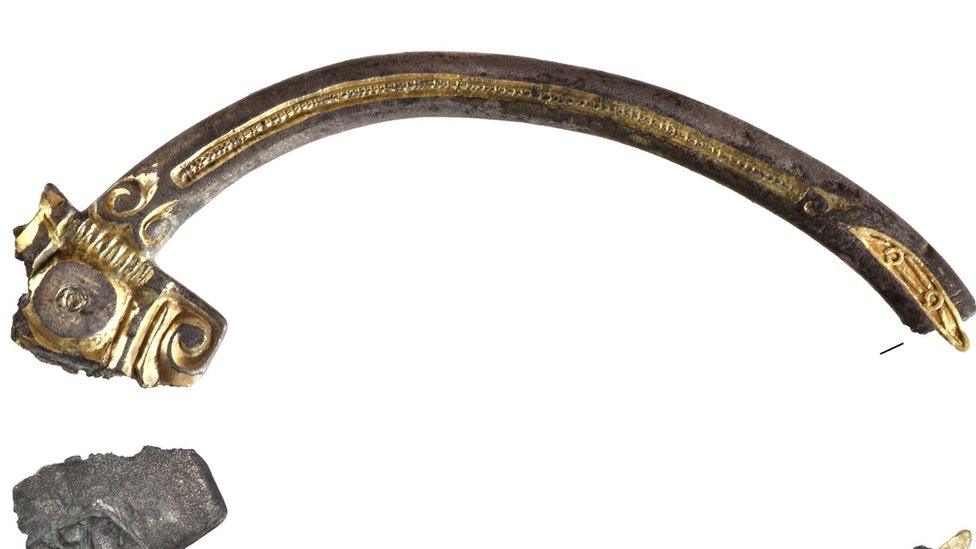
- Published11 December 2018
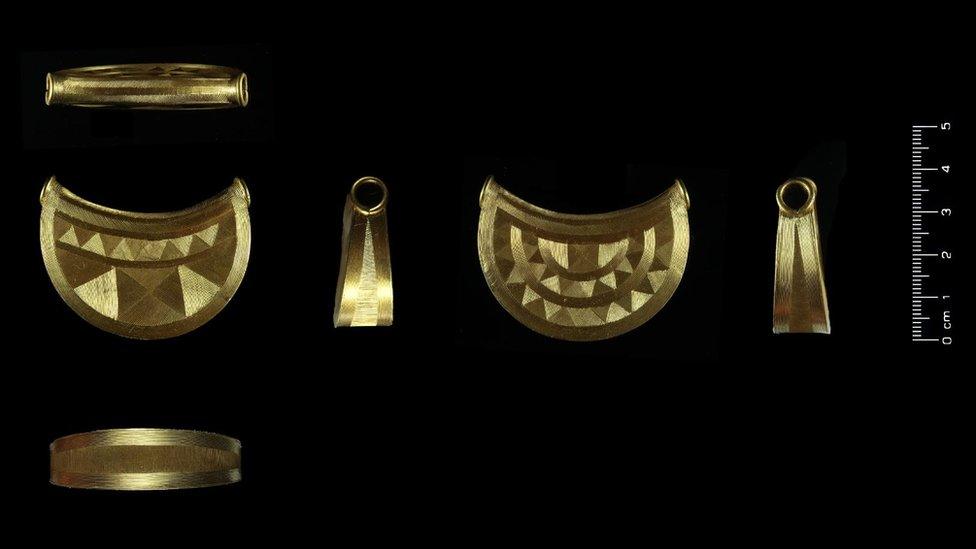
- Published20 April 2017
